Esker Rowl
Wheel Size: 29’’
Travel: 140 mm rear / 150 mm front
Geometry highlights:
- Sizes offered: S1, S2, S3, S4
- Headtube angle: 65.2°
- Seat tube angle: 76°
- Reach: 470 mm (size S3)
- Chainstay length: 425 mm
Frame material: Carbon Fiber
Price:
- Frame w/ Fox Float X shock: $3,500
- Complete bikes: $5,500 to $6,500 (not including upgrades)
Test Locations: Gunnison Valley & Buena Vista, Colorado
Reviewers:
- Simon Stewart: 6’, 172 lbs / 183 cm, 78 kg
- Dylan Wood: 5’10.5”, 155 lbs / 179 cm, 70 kg
Test Duration: 5 months
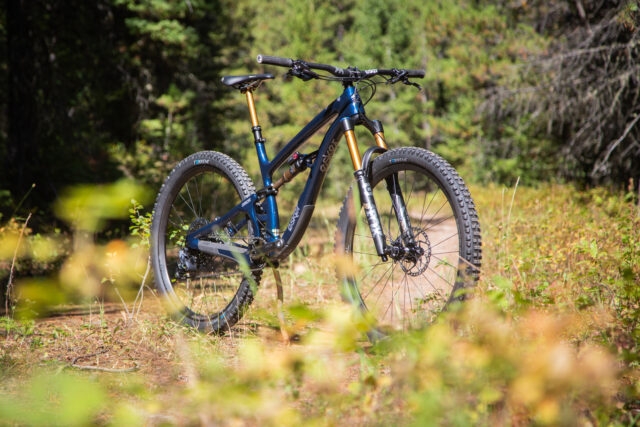
Intro
Established in 2018, Esker Cycles is a fairly young brand, but they have something that not many other brands can claim: a novel Dave Weagle-designed suspension system. The mid-travel Rowl looks to have a lot going for it with a good-looking frame, quality builds, solid geometry, competitive pricing, and of course, that Orion Suspension.
The Frame
Dave Weagle’s Orion Dynamic’s Suspension platform is the top-level highlight here, and while it does bear a resemblance to DW-linked systems in that it employs dual short links, the overall layout is fairly different. For one, while the DW-link layout has been tuned for many modern bikes, it originated back to the days of front derailleurs, and working around those was a significant part of the design brief.
Orion is a newer system with a lower link that rotates around the bottom bracket with the upper one tucked in just above it. Esker says that the short mini-link layout allows for finer independent tuning of the braking and pedaling characteristics, paired with a more linear shock rate which benefits small bump sensitivity and support in the mid travel. Esker also claims it is very efficient, has great traction, and minimal pedal feedback — all desirable suspension traits to be sure, and ones we’ll be paying close attention to while testing.
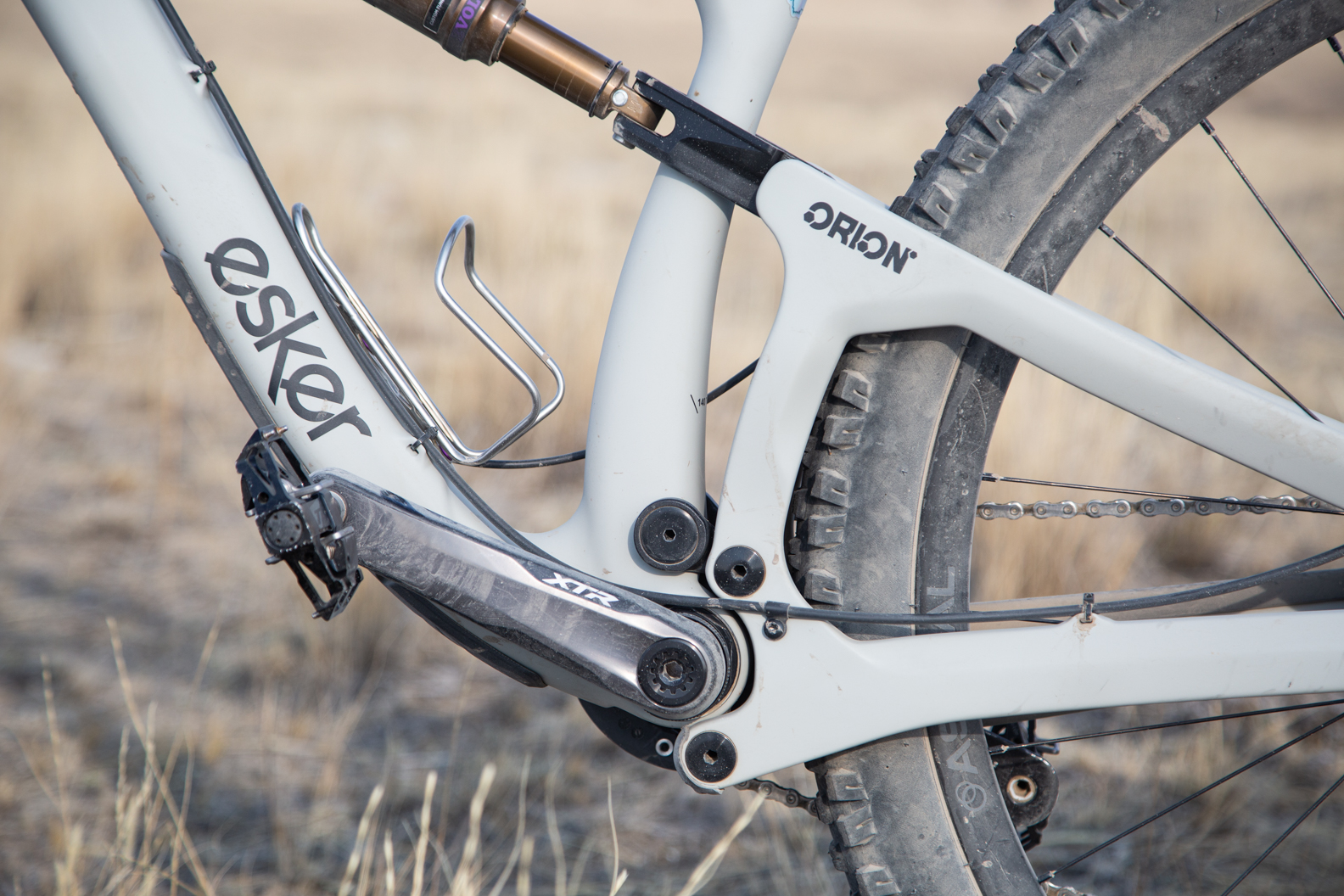
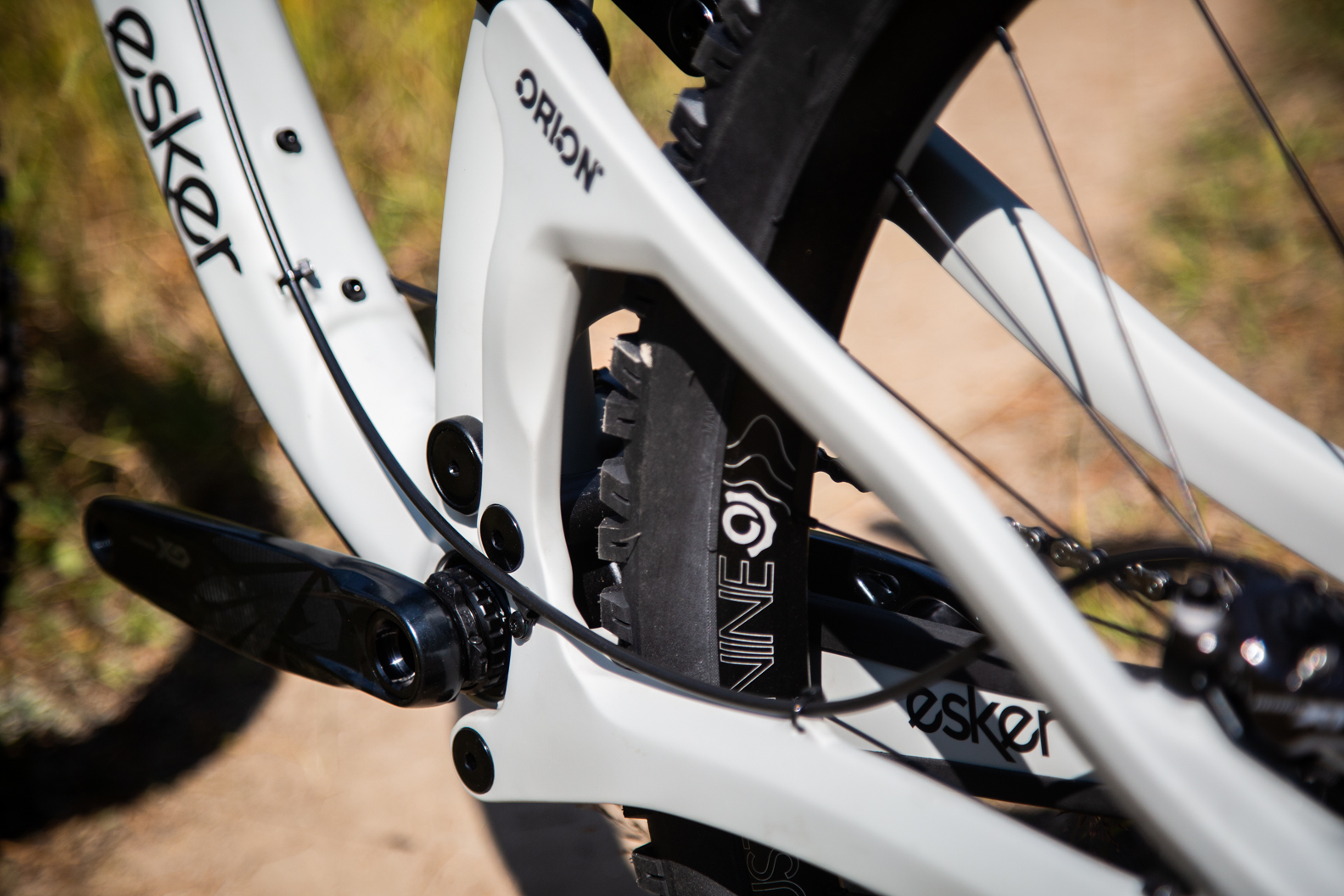
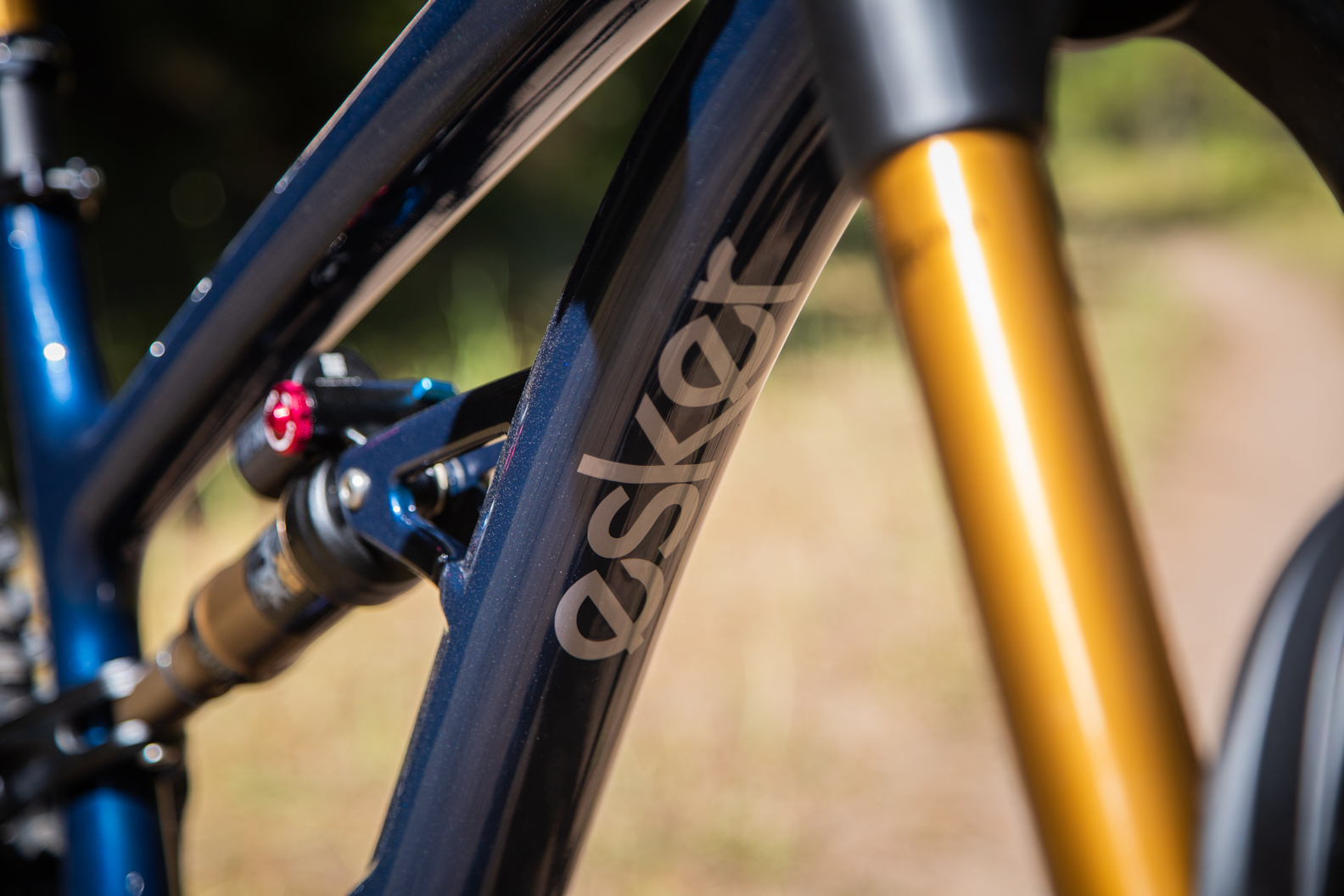
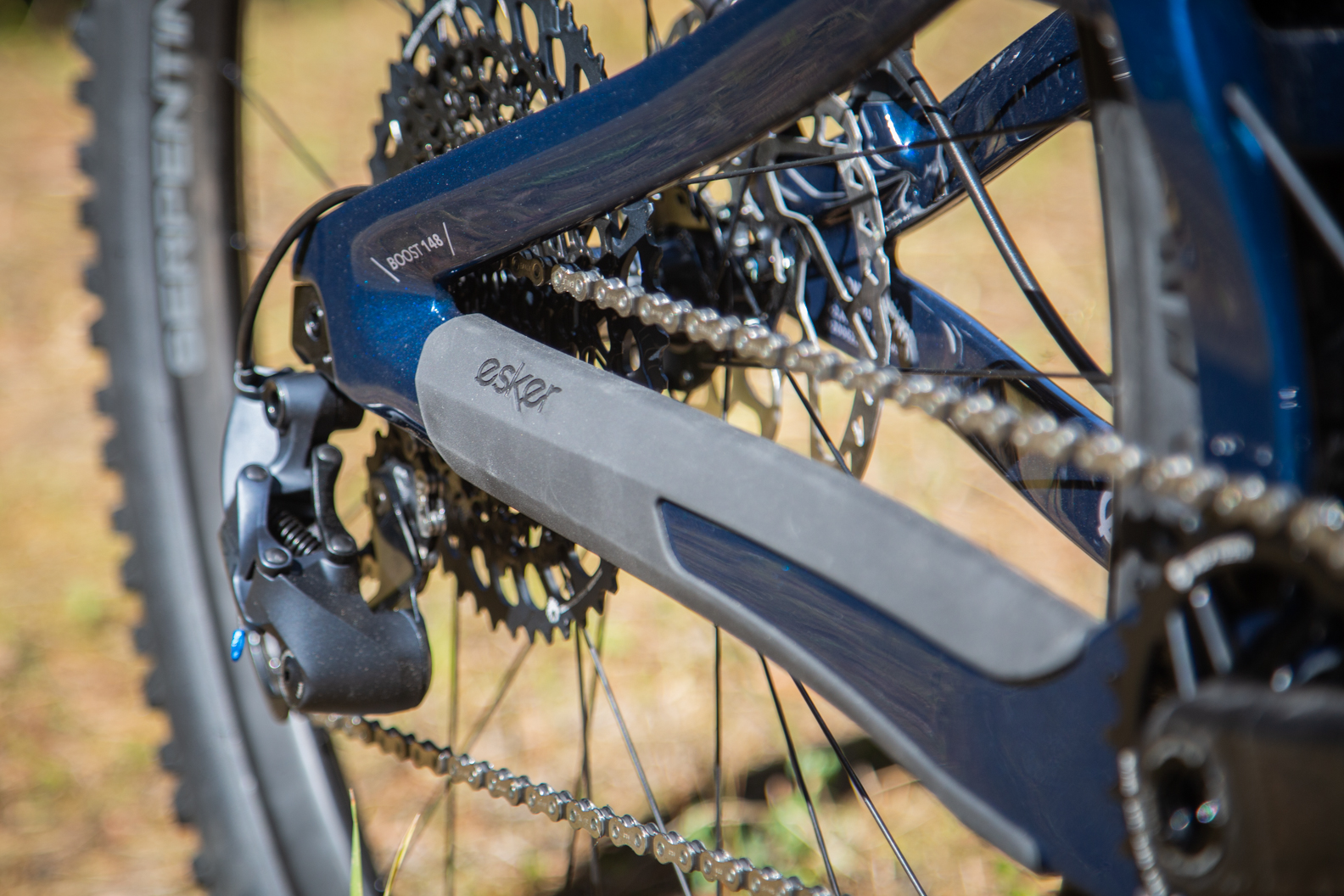
Because the lower link wraps around the bottom bracket shell, it necessitates some pretty big bearings, which in theory should pay dividends in stiffness and durability. Esker has opted to keep the rear brake line routed externally; some will like this, others will not, but there’s no denying that it simplifies brake installations and line replacements. Frame protection looks good and there’s room for a standard-size water bottle inside the front triangle in all sizes. Sadly, there’s no SRAM UDH at this time, so be sure to get a spare when ordering a bike. Frame weights are listed at 3,625g for the S3 including shock, axle, frame protection and seat collar; each step in frame size changes the stated weight by about 90 g.
The bottom bracket is threaded, which we prefer, however due to the architecture of the lower link assembly that surrounds it, there is a proprietary lock ring to hold everything together. That lock ring is left hand threaded to prevent loosening while the link is articulating, and as to be expected, it requires a proprietary lock ring tool for service, which is available on their website.
Fit & Geometry
Esker is adopting S1 – S4 sizing, which correlates roughtly to Small, Medium, Large and Extra Large. They list the Small as suitable for riders 5’ to 5”6”, which seems a bit optimistic for folks at the shorter end of that range, so we’d suggest getting on one first if you’re pushing the lower end of that band. Reach numbers are on the shorter side of what we’re seeing on some newer bikes, but at 76° the seat tube isn’t quite as steep as many other bikes with longer reaches (without being actually slack) which all adds up to pretty normal effective top tube numbers. The 65.2° head tube angle is in the middle of the range, and in general, most of the numbers are pretty normal, except the 425mm chainstays, which are just about the shortest out there for this travel and wheel size. We love that Esker include max seatpost insertion in their geometry chart, and interestingly, due to the way the seat tube is bent and manipulated in different places per frame size, that number is the same across the board.
The Builds
For 2023 Esker has simplified their builds down to just two, a GX and an XT. It’s nice to see the Stan’s Flow wheels on the GX build, and the same goes for the Industry Nine Enduros on the XT. Both builds offer the same upgrade paths, which are new, with the Wolf Tooth one also adding further customization with eight different color options — a nice touch. The only slight cause for concern is the 200 mm travel dropper post on the S2 (Medium) XT build. That said, it is the Wolf Tooth Resolve post that boasts the shortest stack height available, so perhaps total height won’t be a concern after all — and the extra drop is likely welcome for some folks if clearance works out. You can purchase a bike directly from their website, or from an Esker dealer, as they sell both direct to consumer and through a dealer network should you prefer a more conventional shop experience.
- Drivetrain: SRAM GX Eagle
- Brakes: Shimano SLX 4-piston w/ 180 mm rotors
- Fork: Fox Float 36 Rhythm 150mm
- Shock: Fox Float X Performance
- Wheels: Stans Flow S2 Comp
- Dropper Post: SDG Tellis 150mm (S1) / 170m (S2, S3, S4)
- Fox Factory Suspension Upgrade ($900):
- Fox 36 Factory, Fox Float X Factory, Fox Transfer Factory
- WolfTooth Upgrade ($140):
- Headset is upgraded to Premium (stainless bearings), Axle is upgraded to Wolf Tooth with Multi-Tool handle, Grips are upgraded to Echo Lock On, and all items including Seat Collar come with color choice.
- Industry Nine Carbon Upgrade ($1,000):
- Wheels are upgraded to Industry Nine 1/1 Enduro S Carbon
- Drivetrain: Shimano XT 12 speed
- Brakes: Shimano XT 4-Piston
- Fork: Fox Float 36 Performance Elite
- Shock: Fox Float X
- Wheels: Industry Nine 1/1 Enduro S Alloy
- Dropper Post: Wolf Tooth Resolve, 160mm (S1) / 200mm (S2, S3, S4)
- Fox Factory Suspension Upgrade ($400):
- Fox 36 Factory, Fox Float X Factory, Fox Transfer Factory
- WolfTooth Upgrade ($140):
- Headset is upgraded to Premium (stainless bearings), Axle is upgraded to Wolf Tooth with Multi-Tool handle, Grips are upgraded to Echo Lock On, and all items including Seat Collar come with color choice.
- Industry Nine Carbon Upgrade ($700):
- Wheels are upgraded to Industry Nine 1/1 Enduro S Carbon
Some Questions / Things We’re Curious About
(1) How will the Orion Suspension compare to other Dave Weagle designs (and other suspension platforms for that matter)?
(2) The bottom bracket area is a bit busy, and the links are spaced very tightly together. How will that add up in terms of frame stiffness, bearing durability, and serviceability?
FULL REVIEW
I think it’s fair to say that Esker Cycles flies a bit under the radar — but should they, especially as a company touting a novel Dave Weagle suspension design? Having now spent a lot of time on their 140mm-travel Rowl, I think it’s safe to say that Esker definitely deserves some recognition, because they are making well-designed and well-thought-out bikes. The frame is built to a high standard, the Weagle-designed Orion suspension impressed us, it’s got a solid build, and has proved itself to be quite a good, versatile bike.
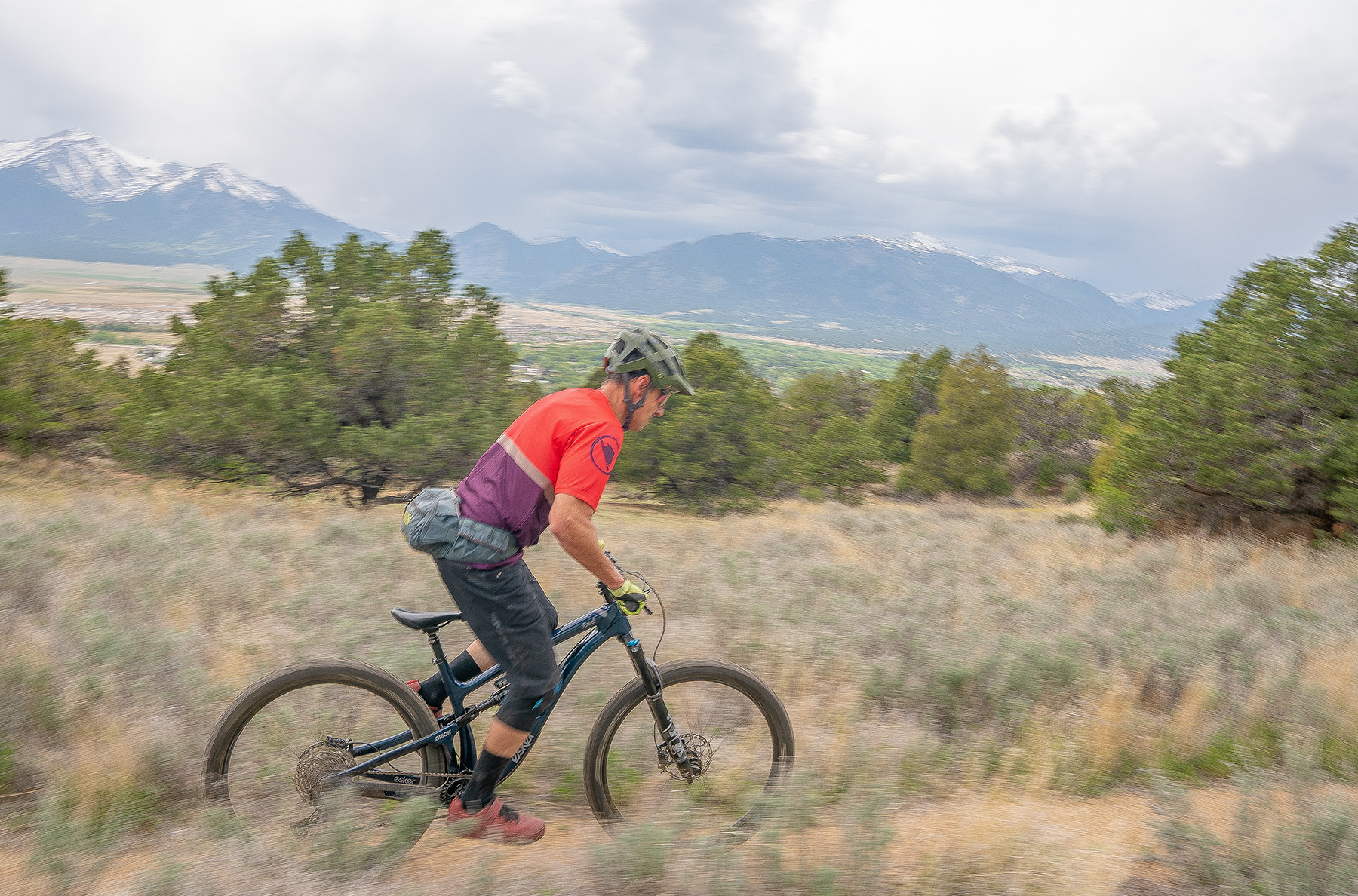
Fit & Sizing
Simon Stewart (6’, 172 lbs / 183 cm, 78 kg): At my height, the S3 / Large was clearly the right size for me. Reach numbers on the Rowl vary by 20 mm between sizes, so the S2 / Medium at 450 mm and S4 / XL at 490 mm were both out of my preferred range of 475 mm to 485 mm. Now, the 470 mm on the S3 / Large is definitely on the shorter side, and whether or not a reach in that range is a good fit for me hinges on the seat tube angle. This Rowl’s 76º seat tube angle helps the 470 mm reach not feel too short — since the 615 mm effective top tube measurement is a more normal number — but the Rowl definitely runs a touch on the smaller side. In our initial Flash Review, I questioned if the Rowl might be too short, and could potentially start to feel cramped on long rides. But after spending more time on it, I can say that is not the case for me, and while it is on the shorter side of my preferences, that more compact does suit the Rowl’s personality.
I would’ve preferred the handlebars to be about 10-15 mm higher when descending, and I would’ve opted for a 40 mm stem over the spec’d 50 mm one, but I didn’t end up making any adjustments to the cockpit. As we get into below, the climbing performance on exceptionally steep terrain required a pronounced shift forward on the saddle and a heavy hand on the bars to keep the front end down, so I felt that raising the bars probably would be counterproductive. And again, the reach was already on the short side so swapping stems likely would’ve made it too cramped.
Dylan Wood (5’10.5”, 155 lbs / 179 cm, 70 kg): I’m just a bit shorter than Simon, and I get along best with bikes with reach numbers ranging from 470-480 mm, though I have liked the fit of bikes with reaches down to 465 mm and up to 485 mm. So at 470 mm, the S3 / Large Rowl is slightly shorter than what I’m most comfortable on, but not by much.
And on the bike, this resulted in a predictably comfortable fit that was just slightly shorter than ideal for me. As Simon mentioned, the Rowl’s moderate 76º effective seat tube angle keeps the top tube from feeling very short, and the subsequent fit feels pretty average for a Trail bike, effectively balancing the ability to get over the front of the bike on steep climbs with a comfortable fit for those longer rides. I prefer a low bar for the steep climbs around Crested Butte, as well as to keep my chest down when descending, and I liked the bar position of the Rowl with just one spacer between the stem and headset.
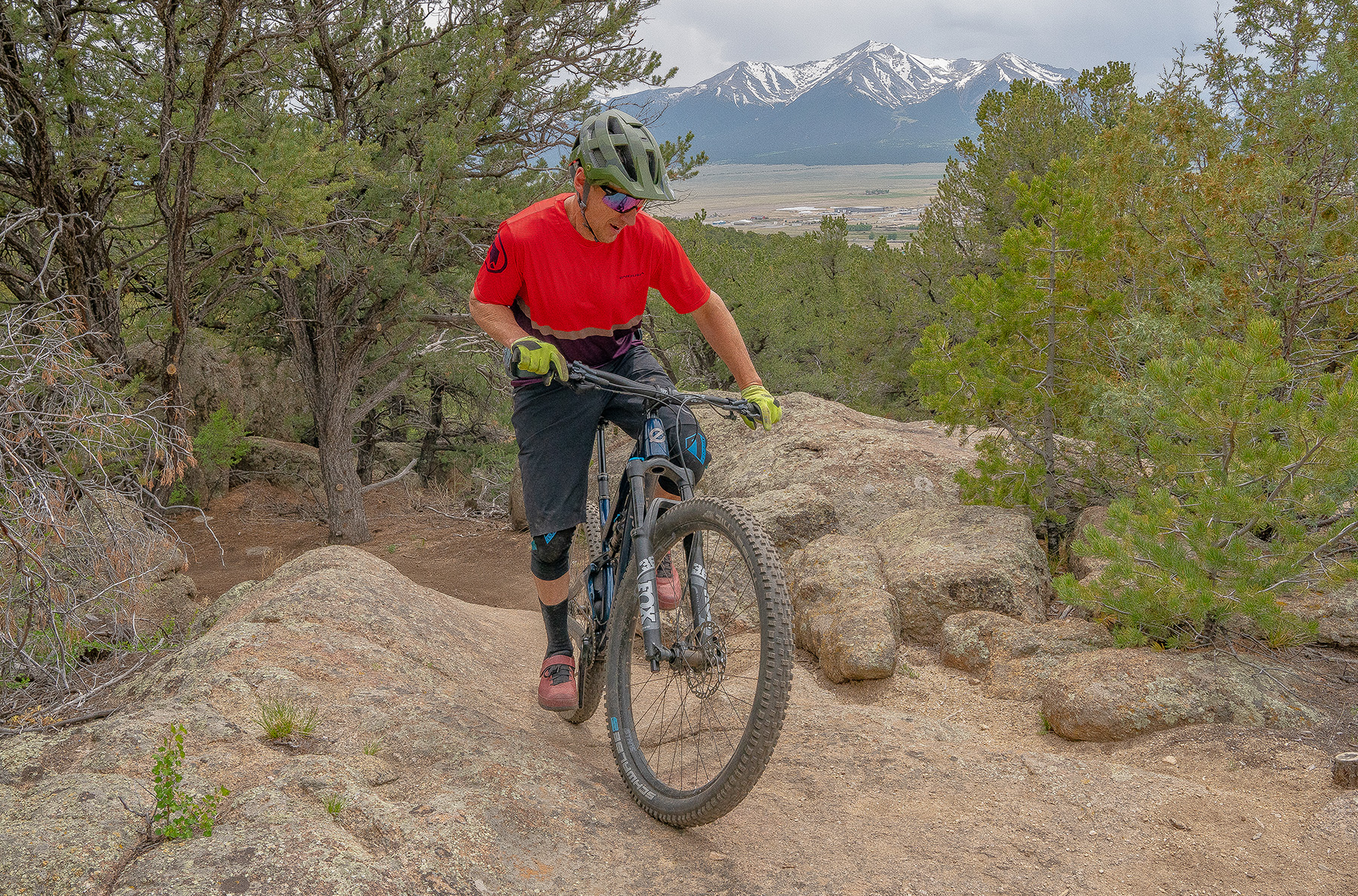
Climbing
Simon: Climbing performance is one of the Rowl’s strongest traits. Its Orion suspension platform does a nice job of transferring rider output to the tires / ground and feels efficient and snappy under power. I never felt the need to toggle the climb switch on the Fox Float X, even on long fire-road climbs. Rest assured though, if you’re the type of rider who likes a firmer feel while climbing, the climb switch on the Fox Float X does make a noticeable difference. I appreciated the Rowl’s efficiency and felt that hard efforts were appropriately rewarded. Obviously, it’s not an XC race bike, but I would have no problem grabbing it for a race on a course that’s on the techier side.
I also give the Rowl high marks for technical climbing, with its maneuverability in tight areas being a standout quality. Now, in loose, steeper terrain it did have some minor problems maintaining traction — but I blame the Schwalbe Knobby Nic tires for this; I don’t find them to be a good match for the predominantly loose-over-hard trail conditions in my area. I’m fairly certain a more aggressive rear tire would go a long way in bolstering that rear-end traction. Getting the front end up and over ledges was a snap thanks to the short 425 mm chainstays and overall compact geometry. Combine this with the suspension’s ability to round out square impacts and I really enjoyed climbing tough janky stuff on the Rowl.
In short, I wouldn’t hesitate to grab the Rowl for days when long climbs are on the agenda. It is worth noting though that the Rowl does require the rider to be dynamic with their body positioning; it’s not the type of bike where you can park yourself on the saddle and not move, but rather, you need to be shifting your weight fore and aft to get the most out of it. Sure, a steeper seat tube angle and longer chainstays would help when trails get super steep, especially when in the easiest gear, but it is very manageable by shifting your weight forward on the saddle. I’m happy with this tradeoff since I live in an area with more technical climbs than not, so having it be more technically savvy aligns with my preferences. Now, if I lived somewhere with non-technical, steep, low-speed climbs, I might look for something with a slightly steeper seat tube angle and longer chainstays.
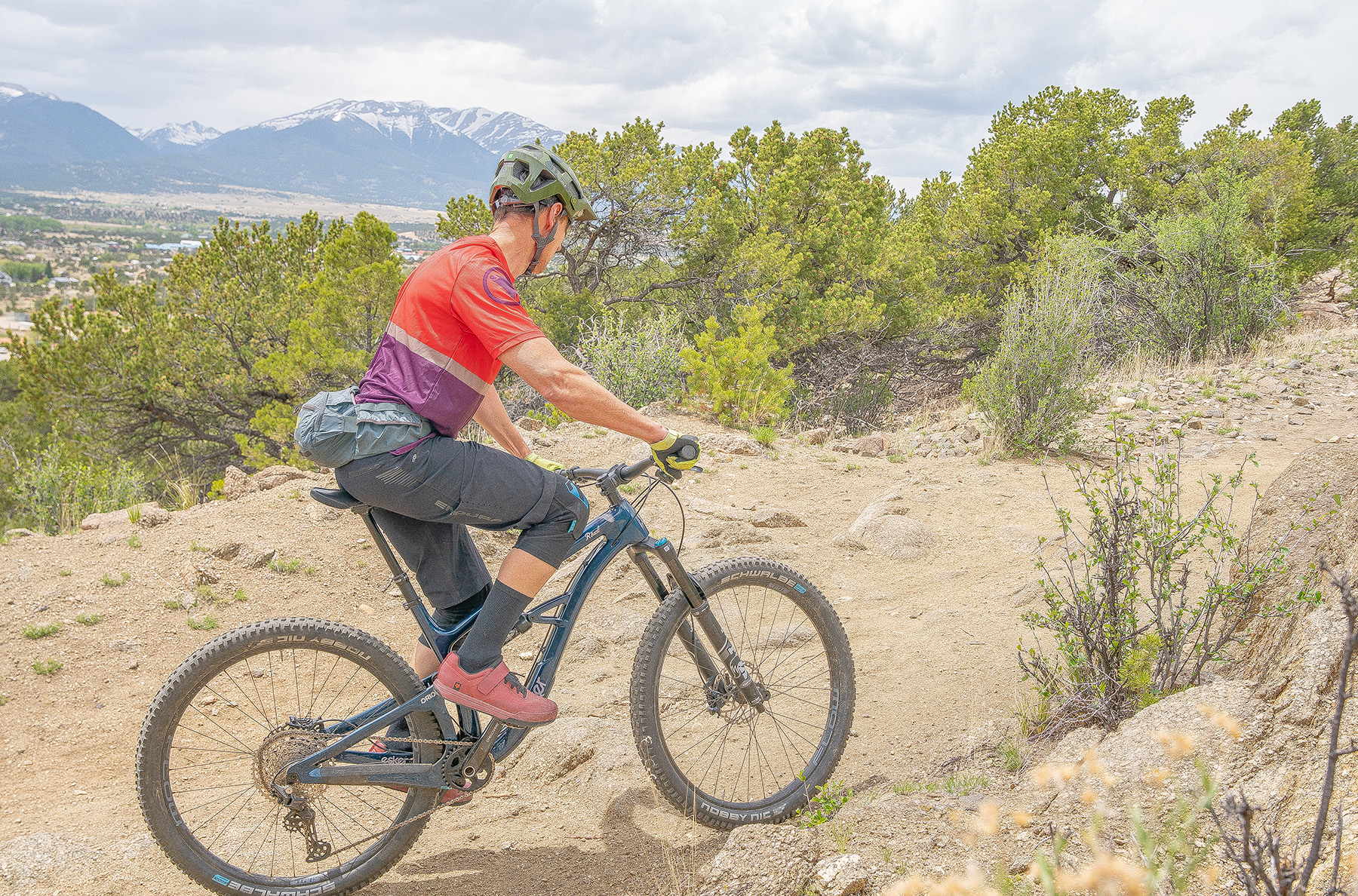
Dylan: I agree — I was thoroughly impressed by the Rowl’s climbing capabilities. It has a stiff, efficient feel similar to many DW-link bikes I’ve spent time on, while maintaining enough traction to tackle loose, technical climbs. It isn’t the most efficient Trail bike I’ve ever been on (that honor goes to the Pivot Switchblade), but its suspension under power certainly feels firmer than average. So much so that I too did not find much use for the climb switch on the Float X, since I found it sacrificed too much traction on the loose and steep climbs of Crested Butte. However, folks who ride a lot of smooth and consistent grades as well as riders who just like using a climb switch should appreciate the extra stiffness the Float X’s switch provides.
Like Simon, I thought the Rowl was a great technical climber. Its short chainstays and not-super-long reach made the Rowl agile in tight spots, and its front end was quite easy to get up and over trail obstacles. I didn’t have as much trouble with the Nobby Nic out back as Simon, but I was mostly riding hardpacked trails.
Descending
Simon: With 140 mm of rear travel and 150 mm in the front, the Rowl slots nicely into the “Trail bike” category (even though that name can mean a lot of things these days). With its decidedly generalist focus in mind, I think the Rowl hits the mark rather well. It’s plenty supportive and has a nimble feel with quick reflexes. I would say the 140 mm of Orion rear-suspension travel doesn’t feel like any more or any less, and I didn’t experience any harsh bottom-outs. Small-bump sensitivity is quite good, and compared to recent bikes I’ve ridden, I would bill it as slightly better than the Ibis Ripmo in that regard, but not as good as the Yeti SB135 (full review coming soon). The Rowl’s quick reflexes do come in handy, but it also asks the rider to pay attention to line selection — it definitely does not fall into the bruiser/smasher category.
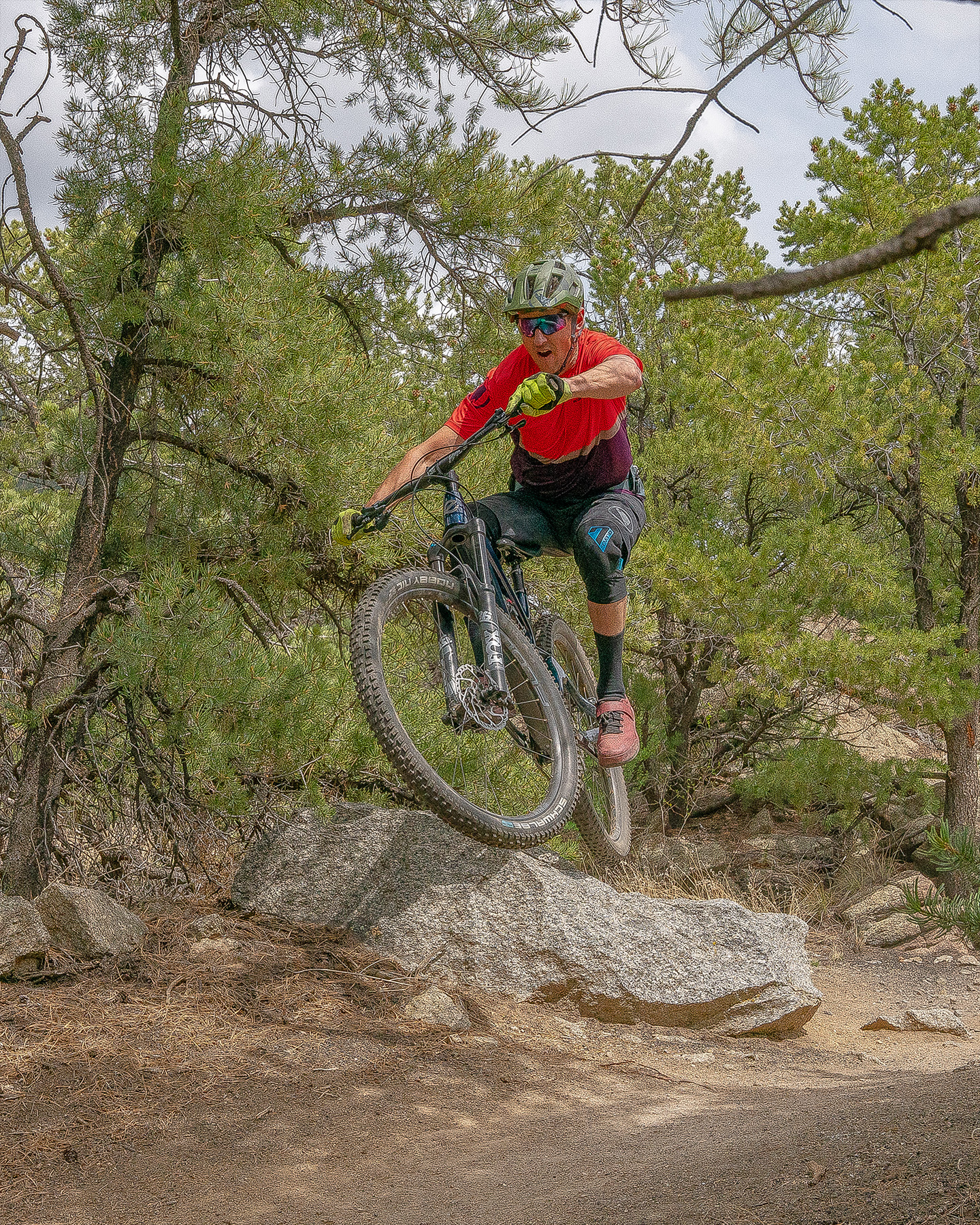
Once the speeds ramped up, the Rowl does exhibit a bit of a speed limit as it starts to get a little nervous. Now, to be clear, it is not positioned as an Enduro bike, nor do the travel numbers suggest so, and the speeds where it would start to tell me to back off were definitely more in line with how hard I would push a longer-travel Enduro bike. The same attributes that give the Rowl this speed limit also give it a nice dose of playfulness. This is where the shorter reach, notably short chainstays, and lively suspension combine to allow the rider to really chuck it around. The Rowl manuals and gets off the ground about as easily as any bike I’ve ridden in recent memory — and in fact, you definitely have to be ready with the rear brake to prevent looping out.
It’s no surprise then that the Rowl’s descending performance favors a rider who prefers quick handling and has an eye on line selection, rather than outright speed. I may be an exception here since I enjoy bikes from both camps, but regardless, I really enjoyed this component of the Rowl’s personality. So many of today’s Trail and Enduro bikes are focused on stability and speed that I find it refreshing to get on a bike where it’s so much fun to goof around.
I mentioned in our Flash Review how impressed I was with the Orion suspension platform and that still holds true after more time spent on it. In comparison to other Dave Weagle suspension designs, notably the DW-Link iterations on Ibis and Pivot bikes, I would say Orion shares the supportive nature we’ve come to expect from Weagle’s other designs, and small-bump sensitivity is on par or slightly better than others. To sum it up, if you’re a fan of DW-Linked bikes, I think you’ll find familiarity with the Orion design and won’t be disappointed. I also mentioned concern over tight tolerances in the linkage area in relation to durability. I did get it properly dirty on more than a few occasions, and while dirt does have a tendency to get trapped in the linkage area, it was easily cleaned out and doesn’t seem like it will present any long-term durability problems.
Dylan: I agree, the Rowl is a lively yet capable descender that isn’t trying to be something it is not. I think it is a very true embodiment of a Trail bike — its 140 mm of suspension smooths out most trails nicely, but it maintains enough efficiency to be engaging on mellower descents, too. I’d say it is slightly more lively and sporty than it is smooth and planted, but it still offers more traction than the even more efficiency-oriented Pivot Switchblade. As Simon noted, the Rowl is pretty playful overall, too, and it’s quite a bit of fun to take advantage of its quick handling behavior. There are definitely more capable Trail bikes out there in really burly terrain, like the Canyon Spectral 29, but the Rowl stands out for how easy it is to get in the air and whip around, all while still offering enough capability on the way down to handle just about anything you throw at it, albeit without as much build-in forgiveness as a longer-travel Enduro or Downhill bike.
While descending, the Orion suspension platform feels very well-rounded overall. It has good small-bump sensitivity, respectable mid-stroke support, and supportive bottom-out ramp-up. The Rowl doesn’t feel so planted that it feels reminiscent of an Enduro bike, but it also doesn’t feel so stiff that you’re fooled into thinking you are on an XC bike. It’s true to its Trail moniker in the sense that it handles everything quite well while not excelling in a particular category, and I mean this in the best way possible. The Rowl was up for just about anything I felt like riding, from rolling XC trails to the occasional visit to the bike park.
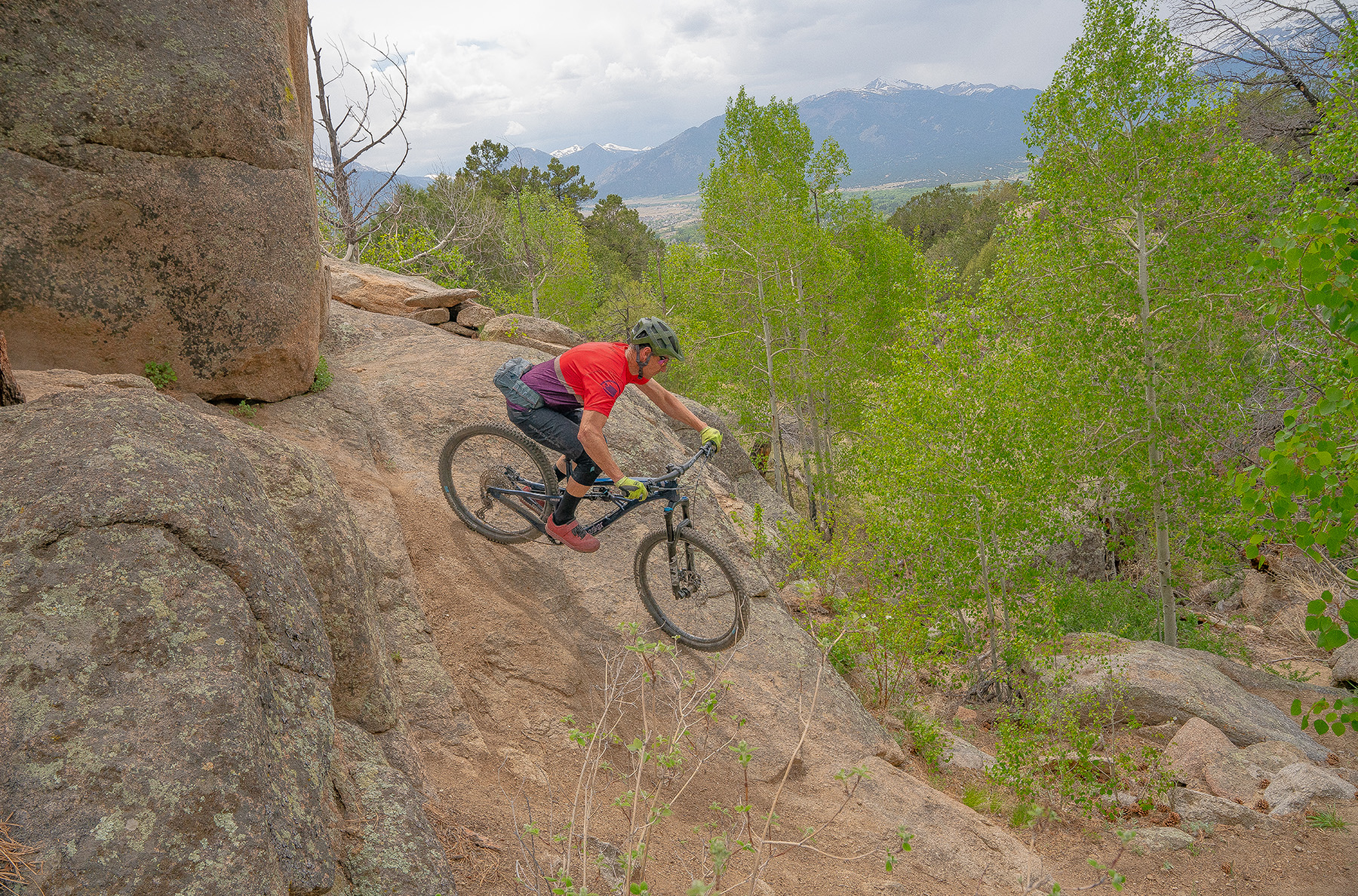
The Build
Simon: Esker keeps it simple in the build department with just two offerings for the Rowl. As we mentioned in our Flash review, the build on our test bike is no longer offered, but it is somewhat similar to the current GX build. The notable differences on our test bike are the Shimano Deore drivetrain and brakes. The current GX build has (you guessed it) a GX drivetrain, but they have also snuck in SRAM’s DB8 four-piston mineral oil brakes. It’s worth mentioning that Esker does offer some nice upgrade options, including Fox Factory Suspension and a variety of Wolftooth parts that offer performance advantages as well as a dash of bling.
The only couple of issues I had with the build were the Fox 36 Rhythm fork and the Schwalbe Nobby Nic tires. The Fox 36 Rhythm is a capable performer, but it does leave a lot of performance on the table, and I think it holds it back descending since it’s not able to keep up with the rear end. Considering the before-sale pricing of $5,500, it’s more common to see Performance and Performance Elite versions of the Fox 36. However, given the current sale pricing (as of publishing this review), I’d be very inclined to bump up to the XT build ($5,005), which properly sorts out the fork spec with the Fox 36 Performance Elite, along with a host of other worthwhile upgrades.
As for tires, to be clear, I view tire spec with the opinion that while it’s nice if a bike comes with my preferred tires, it also doesn’t matter too much if it doesn’t. Even at the 2.6’’ size spec’d, I found the Schwalbe Nobby Nic tires a bit undergunned in most of the terrain I tested the Rowl on. They do, however, roll nicely and contributed to the Rowl’s efficient climbing manners.
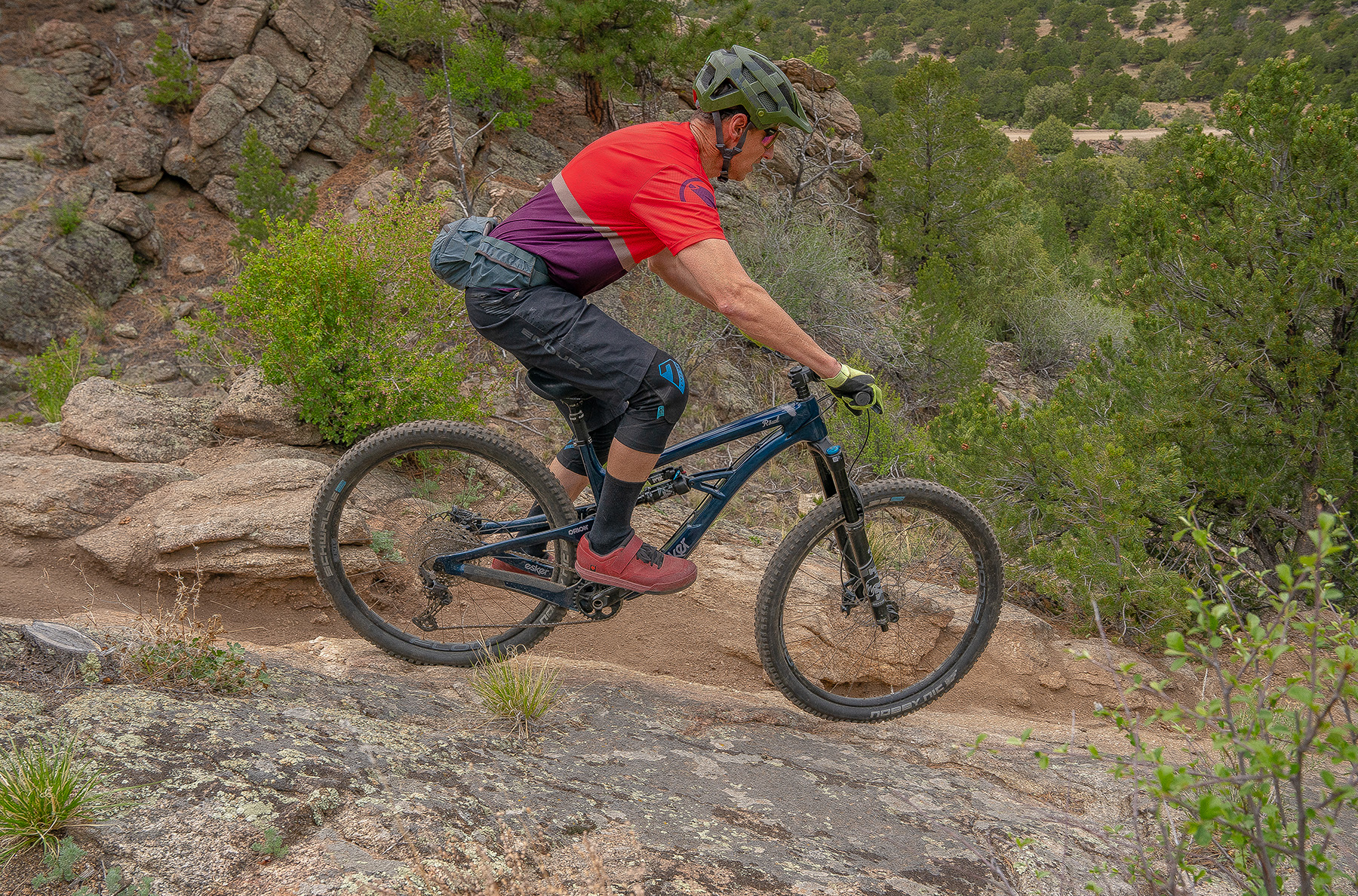
Dylan: I agree, the build kit we tested was satisfactory overall with some room for improvement. I’m consistently impressed by every Shimano drivetrain I get on — their lower-end SLX/Deore drivetrain on our test rig shifted very reliably, even under load and when downshifting. I also didn’t have many quarrels with the SLX brakes, which performed reliably with consistent power and bite point — about as much as you can ask from a pair of brakes.
I will agree that the Fox 36 Rhythm fork didn’t quite keep up with the suspension on the rear end of this bike. I do think that most set-and-forget riders will have no problems with this fork, but folks who find high-end dampers like Fox’s GRIP2 useful will likely find a lack of adjustability and overall performance in this fork, especially in the realm of high-speed damping.
The 2.6’’ Nobby Nic tires provided an interesting level of efficiency to this bike, and I think how much you like them will depend on your terrain. I rode mostly dusty-over-hardpack trails, and I found the wide-yet-quick Nobby Nics quite appropriate for that. But the more you find yourself opting for aggressive, deep-knobbed tires, the more you might want to swap the Nobby Nics out for something like Maxxis’s Assegai.
Comparisons
Simon: On paper, these two look way more closely matched than they end up being out on the trail. Sure, the travel numbers are close and geometry isn’t that different, but how they go about their business very much is. There are some similarities in their climbing performance and the difference between them is more firmly rooted in downhill performance and overall on-trail feel — when focusing on descending, that gap is sizeable, with the Ripmo being more stable, planted, and capable, while the Esker is more snappy and quick handling. In terms of overall trail feel, the Ripmo confers a more burly feeling everywhere and comes across as “more bike” in every situation.
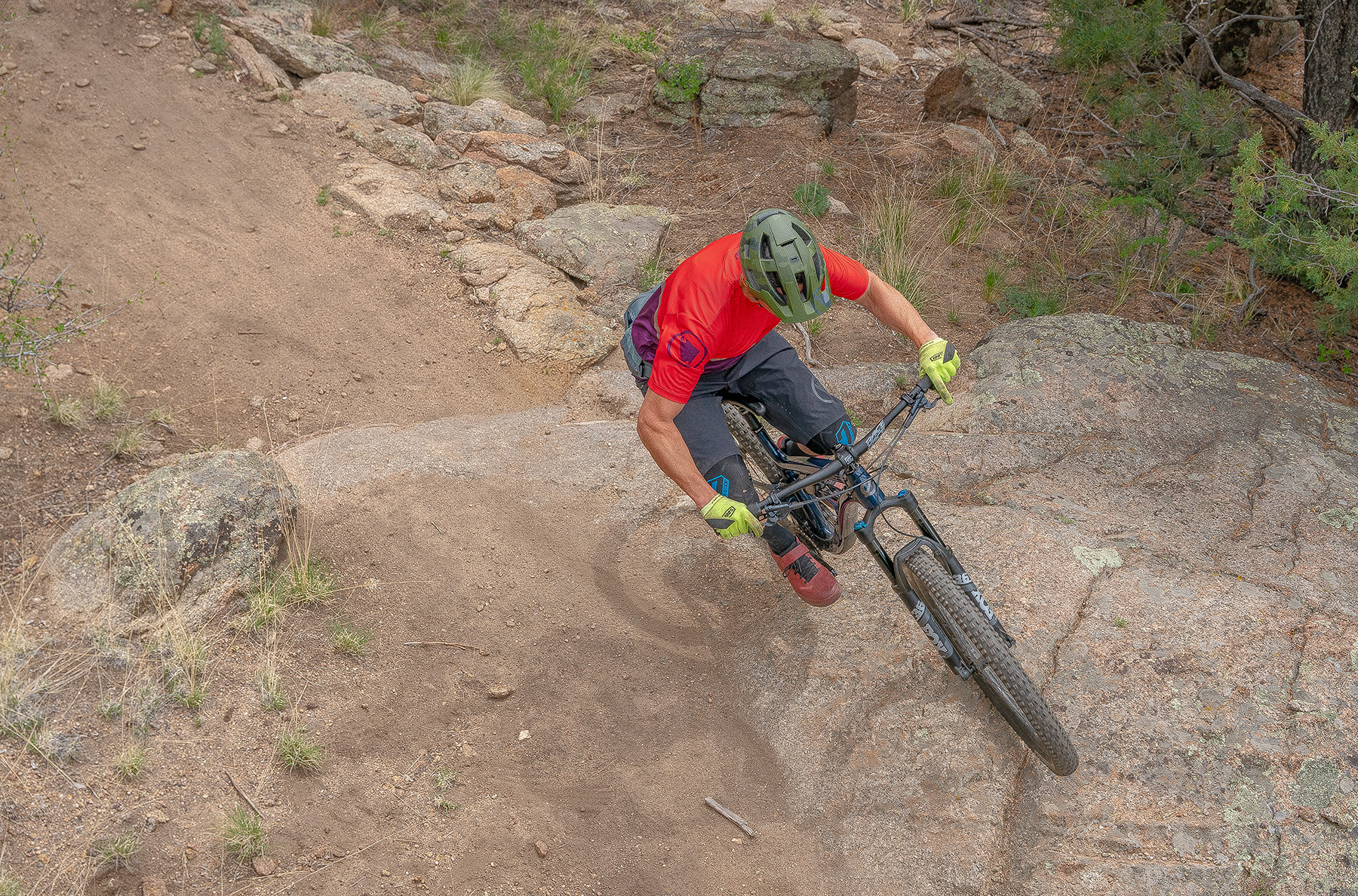
Simon: Here’s another comparison with a bike I very much like, and also one I’m looking forward to spending more time on. The T.E.M.P.O is a bike that is on the shorter-travel range of the trail segment, but it behaves more closely to the longer-travel Rowl than the two’s suspension numbers might suggest. I think a lot of this has to do with the majority of the geometry numbers being quite close, along with the supportive and efficient-feeling suspension on both bikes. The T.E.M.P.O.’s head angle (65.5°), seat tube angle (76.6°), and reach (470 mm) are very close to the Rowls numbers (65.2°, 76°, 470 mm). The big difference is in the chainstay department, at 440 mm for the T.E.M.P.O and 425 mm for the Rowl.
Both bikes have a lively feel, both climb very well, and both are playful. Despite having less travel front and rear, it’s the T.E.M.P.O that affords more confidence when the speed picks up downhill, most likely a result of its 15 mm longer chainstays. On the other hand, and most likely the result of its shorter chainstays, I found the Rowl to be the more competent technical climber.
I think the choice between these two bikes can be easily defined by rider preferences, and perhaps an affinity towards either carbon or aluminum.
Dylan: I would agree. Surprisingly, the shorter-travel T.E.M.P.O. offers more stability on the way down as far as geometry goes, giving the rider a bigger sweet spot. But, the T.E.M.P.O. is also more lively, efficient, and energetic, while the Rowl feels a bit smoother over rough terrain.
Simon: This comparison may look like a bit of a stretch since the SB135 is a 27.5’’ bike, and we have the Lunch Ride version which increases fork travel from 150 mm to 160 mm. The Yeti’s geometry numbers are considerably more progressive than the Rowl’s, but there are nevertheless some similarities in the ride. The SB135 is a playful, lively, quick-handling bike, just like the Esker, but they arrive at those similar ride characteristics in very different ways.
The Yeti does through via a combination of its smaller wheels and suspension tune, and the Esker from its geometry. Even though the Yeti has smaller wheels and less rear travel, I still give it the nod for capability on steeper, more technical descents. Historically, I’ve gotten on very well Yeti’s Switch Infinity suspension design, and this latest iteration is no exception. But the Esker’s Orion suspension comes surprisingly close.
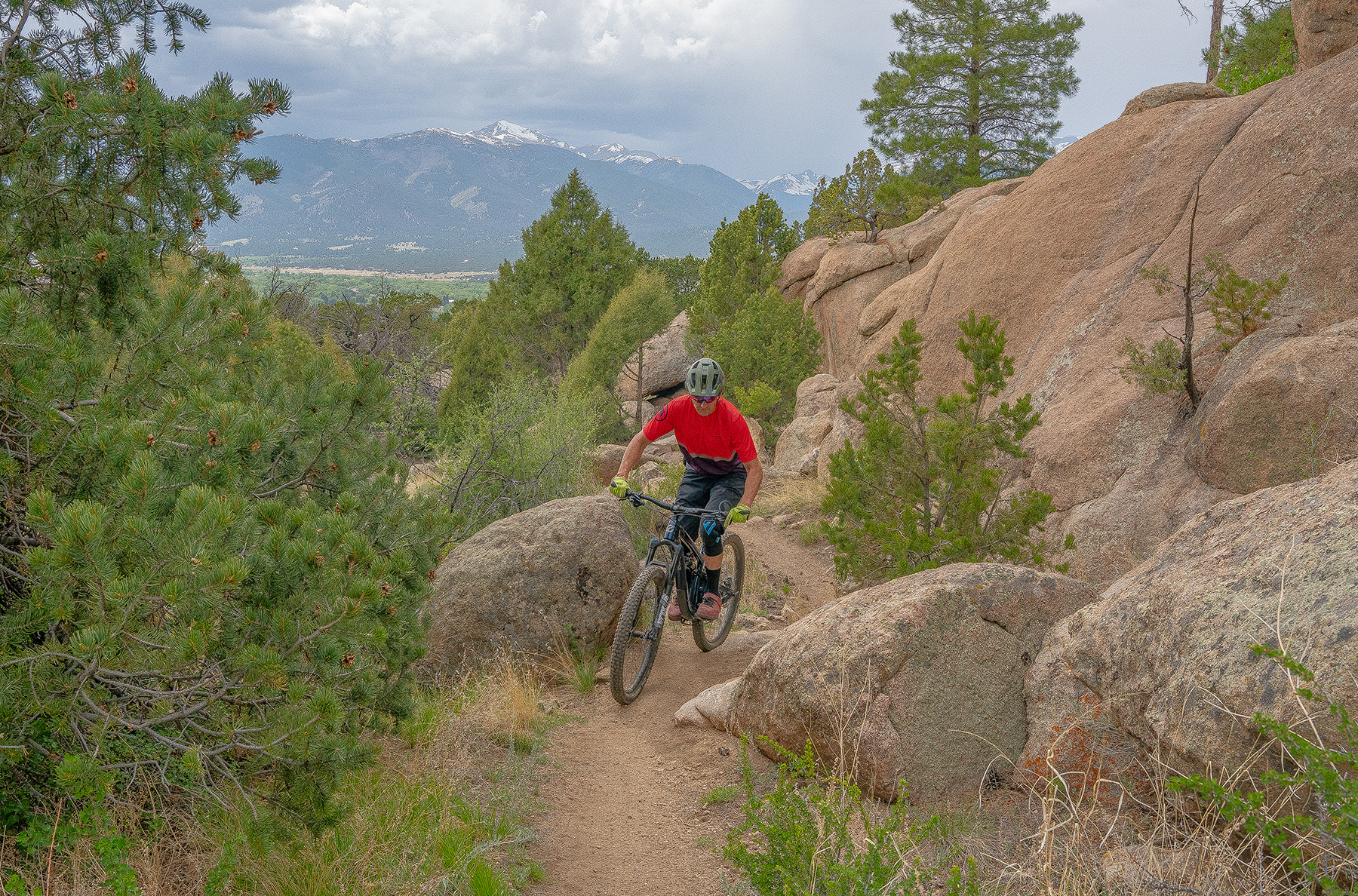
Dylan: The Rowl reminded me of the Switchblade in some ways. Both feature Dave-Weagle-designed suspension platforms, but the Switchblade is notably more efficient, stiff, and sporty than the Rowl. The Rowl’s suspension feels more plush and the Rowl also feels more engaging and forgiving at slower speeds, but the Switchblade has a higher speed limit.
Dylan: The Canyon Spectral is more downhill-capable in just about every way. Its longer wheelbase offers a bigger sweet spot and more stability overall, and its increased travel is also evident, offering a smoother ride and more forgiveness in terms of line choice. The Rowl is slightly more efficient, but its shorter reach and quicker handling also create a more engaging and maneuverable ride.
Dylan: The Bronson is another bike that felt more capable than the Rowl as far as descending goes. I will say that the Rowl pedals better and is slightly more efficient than the Bronson, but the Bronson feels more smooth and planted on the way down. The Bronson’s geometry and mixed-wheel configuration also had a particular affinity for steep terrain, whereas the Rowl feels a bit more engaging on mellow trails.
Who’s It For?
Simon: I think the Rowl’s versatile personality and relatively conservative geometry (except for its 425 mm chainstays) will resonate well with many seasoned mountain bikers. Notice I’m not saying “old” here, but rather, I’m thinking of riders who have been invested in the sport for some time, have been through many bikes, and are after something more modern, but not a bike that may require a big adjustment in riding style. The Rowl’s non-extreme geometry numbers are still absolutely current, but they are also not so progressive that they warrant the aforementioned adjustment. In short, I think a lot of riders could hop on the Rowl and feel instantly comfortable, which will translate to confidence, which then translates to fun, and isn’t that what it’s all about?
Dylan: The Rowl stands out to me because of how predictable, intuitive, and comfortable it felt in all the terrain I threw at it. It is a bit of a “jack of all trades, master of none” in that I can’t really pick a particular situation in which it shined the most, but I also can’t think of a time when I felt the Rowl was truly out of its element. Because of this, I think the Rowl is a solid option for a very wide variety of riders, especially folks who just want a generalist “Trail bike” to do it all and aren’t sure of any particular traits or ride qualities that they are hoping to have. I will say that it feels more playful than the average bike, but the Rowl also didn’t feel like it gave up much stability and surefootedness to get there.
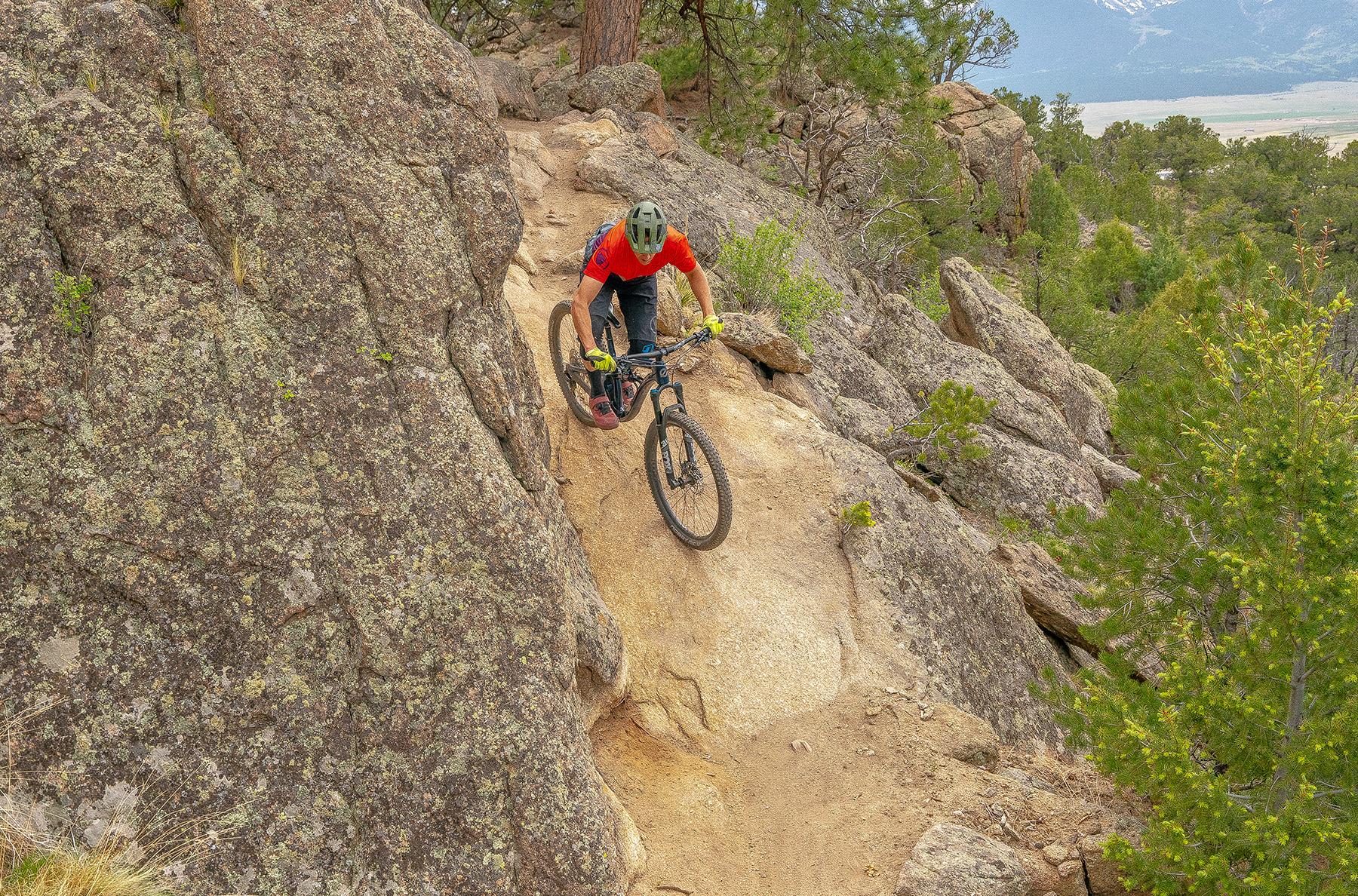
Bottom Line
Going back to what we said in the intro, the Rowl is a very good mountain bike. The draw to pigeonhole bikes into increasingly narrow categories is hard to ignore; however, I believe there are a ton of riders out there that just want “a mountain bike,” and are not looking for a Down-Country bike, an XC bike, a Trail bike, an Enduro bike and on and on and on — the Esker Rowl is a Mountain Bike, and a damn good one.

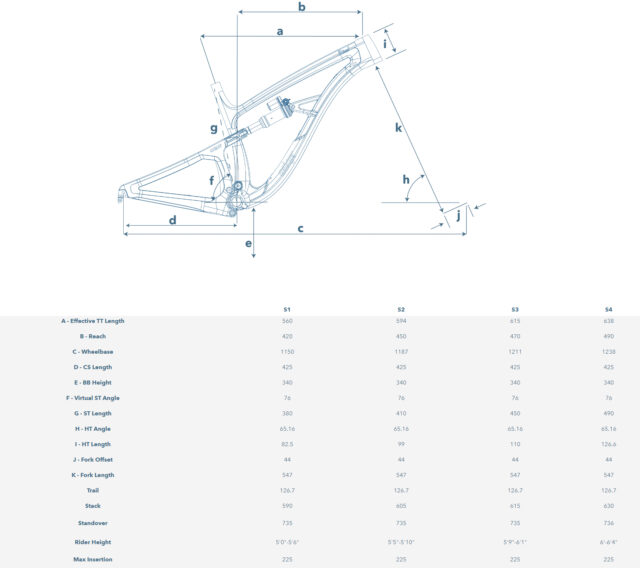
I’m stoked on the Esker brand!
Looking forward to hearing what the Blister Crew thinks!
Fabulous bike.
Looking forward to how this compares to the Occam LT. Slightly slacker HTA, same shock, and an even shorter wheelbase (mostly from the chainstay). Battle of the mid-travel backcountry rigs.
So stoked on Esker. I’ve gotten to ride a few of them now at Demo’s and just pulled the trigger on one. The Rowl is one of the most fun bikes I’ve ever been on!
How are you liking the Rowl? I’m thinking of grabbing one while they are on sale currently.
So far I’ve been getting along very well with the Rowl, and just recently handed it off to another reviewer for their take. I wouldn’t hesitate to buy one — especially with the current sale they’re running.
Hearing echoes of David’s Occam review: efficient, technical climbing ability, capable descender that requires an active riding style and thoughtful line choice. Any chance of getting a comp?
Awesome bikes from Esker! Good write up.